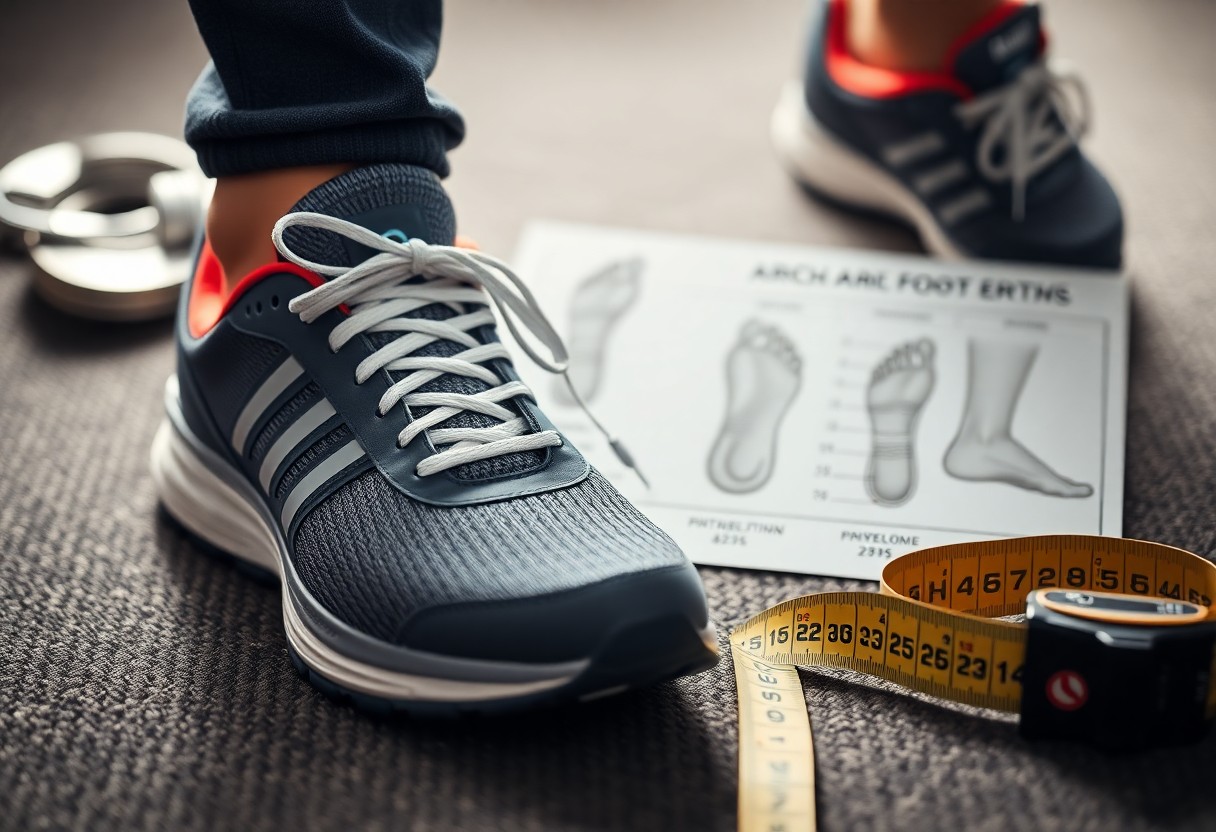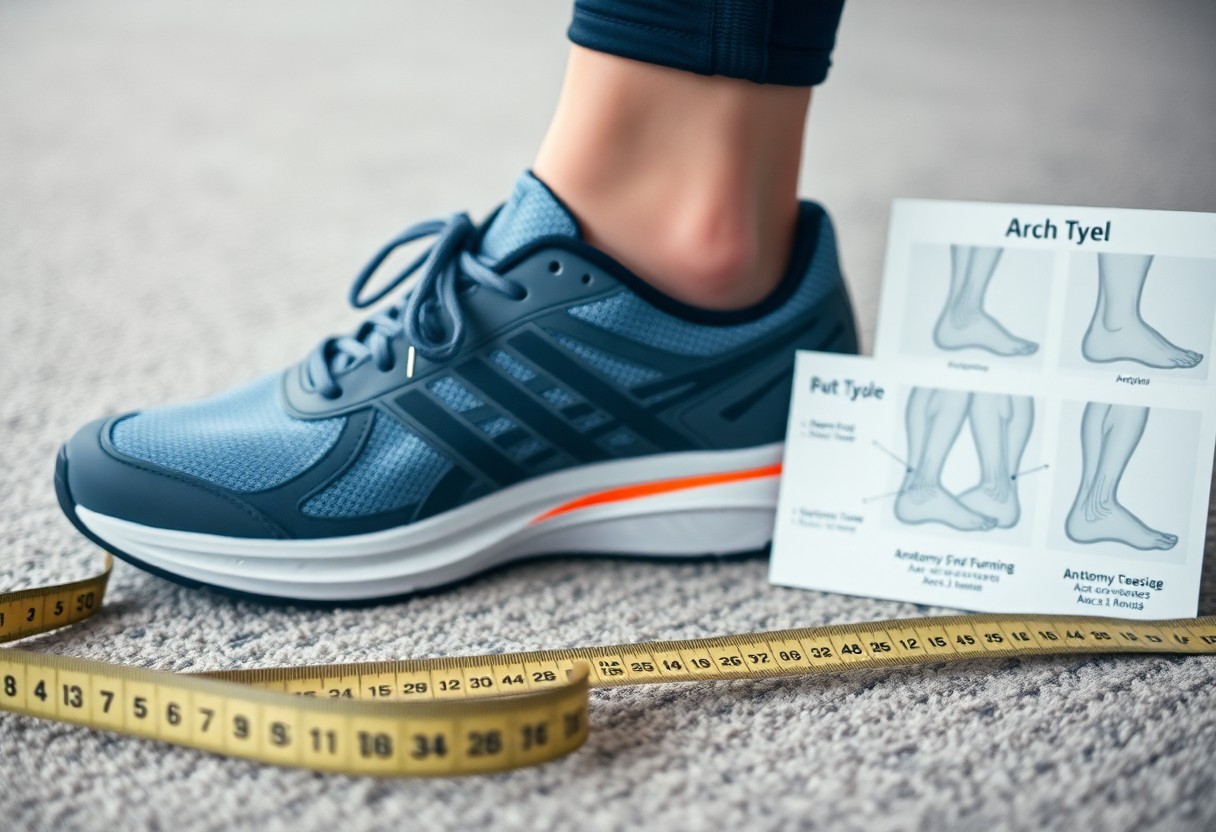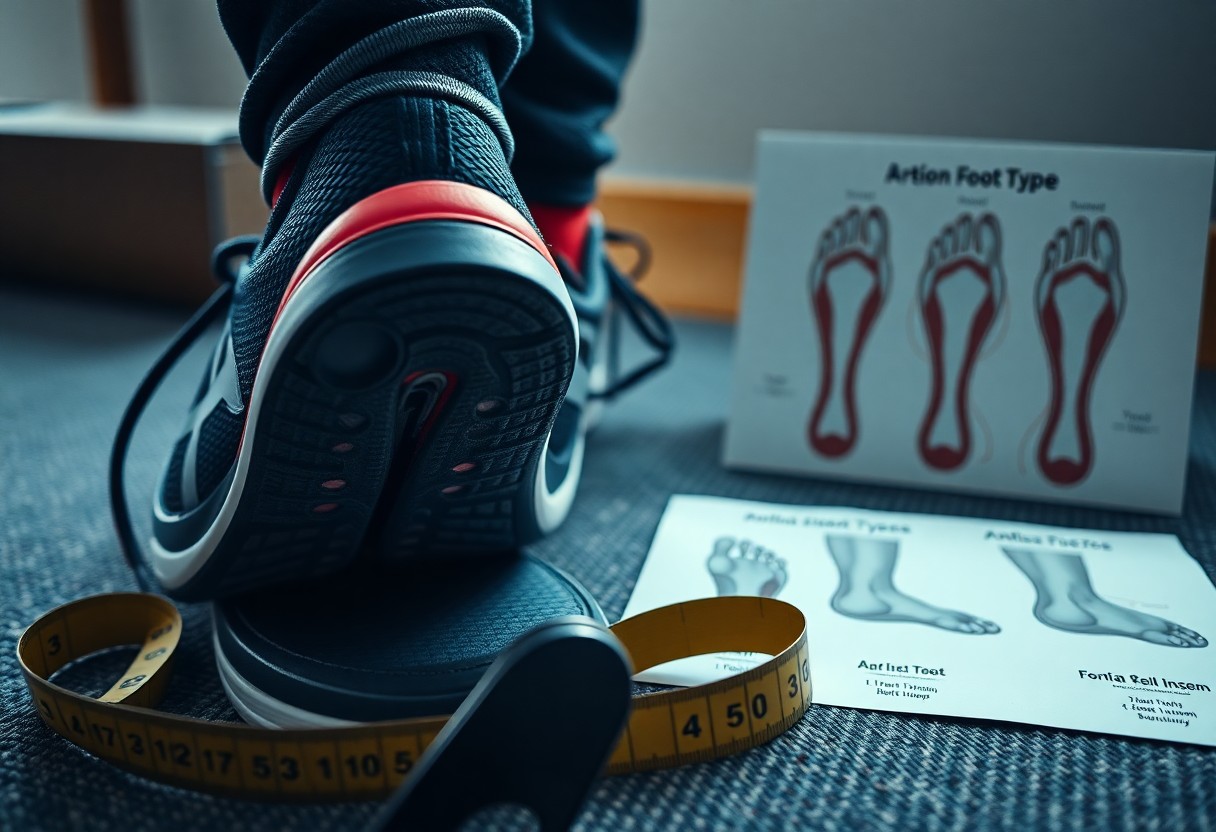Providing adequate foot support goes beyond simply adding arch support to your shoes. Many people might be surprised to learn that the majority of individuals do not actually require arch support in their footwear. Research indicates that for many, abstaining from artificial arch support can actually bolster the strength of your foot muscles over time. Relying too heavily on such supports can lead to diminished muscle strength. The human foot is naturally designed with arches that flex and adjust to various terrains, and limiting this natural functionality with rigid supports could potentially harm your foot health in the long run. This in-depth article aims to reveal the science behind arch support and equip you with the knowledge necessary for optimal foot health.

Uncovering the Historical Development of Arch Support in Footwear
The natural support system of your feet has played a crucial role in footwear design throughout history. The concept of arch support gained notable attention in the 1920s when Dr. William Scholl first introduced commercial orthotics. Before this innovation, individuals relied on the natural strength and flexibility of their feet. Understanding this historical perspective helps illuminate how contemporary views on foot health have evolved and emphasizes the importance of reevaluating current footwear practices.
Tracing the Evolution of Traditional Footwear Practices
The journey of footwear development reveals that ancient societies primarily utilized simple, flat sandals or often went barefoot. Such practices promoted natural foot development and strength. The feet of our ancestors remained strong and flexible, free from artificial supports, as evidenced by studies on indigenous populations who continue to wear traditional footwear. This historical insight highlights the vital role of natural foot mechanics in sustaining foot health over generations.
Analyzing Modern Standards in the Shoe Industry
During the mid-20th century, particularly in the 1950s, shoe manufacturers began embedding arch support as a standard feature in footwear. Today, the majority of modern shoes come equipped with structured arch support, which has become a common expectation despite limited scientific evidence supporting its universal necessity. This shift reflects changing consumer demands and industry practices, yet it raises important questions regarding the implications of these designs on overall foot health.
Currently, it is estimated that 70% of modern shoes include this feature. However, studies published in the Journal of Foot and Ankle Research suggest that an overreliance on arch support can lead to muscle weakness in the feet. As a result, many podiatrists now recommend incorporating periods of barefoot walking and using minimally supportive footwear to help maintain natural foot strength and functionality.

Delving into the Complex Architecture of the Foot
Your feet are comprised of 26 bones, 33 joints, and over 100 muscles, functioning most effectively when they are allowed unrestricted movement. The arch of the foot serves as a self-supporting structure that strengthens through regular use, but can weaken when subjected to artificial support. Research suggests that 75% of individuals who wear traditional shoes with arch support experience a decrease in foot muscle activity, leading to a decline in natural foot strength over time. This reinforces the importance of understanding how our footwear choices directly impact our foot health.
Revealing the Wonders of Natural Foot Mechanics
The design of your foot is an incredible feat of biomechanics, featuring a complex system that supports itself. Walking barefoot or in minimal shoes allows your feet to fully engage, enabling your arches to flex and develop strength naturally. Studies indicate that individuals who frequently walk barefoot or choose minimal footwear are likely to develop stronger foot muscles and more stable arches compared to those who rely on supportive shoes. This underscores the critical role that natural movement plays in maintaining healthy feet.
Boosting Muscle Function and Development for Optimal Foot Health
Interrupting your foot’s natural movement can impede its development. Your foot muscles need consistent engagement through natural activities to retain their strength. Research published in Nature indicates that wearing shoes without arch support encourages the development of stronger intrinsic foot muscles. This relationship illustrates the necessity of allowing your feet to move naturally for optimal health.
Moreover, it’s crucial to understand the repercussions of wearing shoes with built-in arch support. Such footwear can diminish foot muscle engagement, which may lead to weakness over time. Studies show that transitioning to minimal footwear can result in a remarkable 60% increase in foot muscle strength within eight weeks. However, it’s essential to approach this transition thoughtfully, particularly if you have pre-existing foot conditions, to avoid injury.
Investigating Research and Evidence Surrounding Foot Health
If you are keen to understand the scientific principles behind arch support, numerous studies demonstrate that your feet can strengthen without the need for artificial support. Various research findings indicate that natural foot movement promotes better muscle development and enhances arch stability, emphasizing the vital role of biomechanics in sustaining foot health.
Highlighting Significant Scientific Research on Arch Support
Among the most important findings, a study published in Nature reveals that individuals who wear minimal footwear exhibit foot muscles that are 50% stronger than those who wear traditional supportive shoes. This evidence supports the idea that consistent movement and activity allow your feet to maintain their arches organically, which is critical for long-term foot health.
Comparative Analysis of Footwear Choices Across Different Populations
Contrasting Traditional Footwear Users with Minimal Footwear Enthusiasts
| Traditional Shoe Users | Minimal Shoe Users |
| Exhibit higher rates of flat feet | Demonstrate superior arch strength |
| Show weaker foot muscles | Exhibit stronger foot muscles |
An extensive analysis of diverse populations uncovers significant variations in foot health. The structure of your feet can adapt greatly based on the types of shoes you choose to wear, which influences overall foot strength and stability.
Insights from Global Population Studies
| Developed Countries | Barefoot Communities |
| 20% flat foot occurrence | 3% flat foot occurrence |
| Higher reliance on arch support | Natural arch strength |

Understanding the Support Paradox in Footwear Choices
Challenging common assumptions, overdependence on arch support in footwear can undermine the natural strength of your feet. The human foot is intricately designed with a network of muscles, tendons, and ligaments that work harmoniously to provide natural support. When artificial arch support fills this role, your foot muscles may become less active, leading to gradual weakening over time.
Examining the Dependency Cycle Related to Arch Support
The incessant use of arch support can create a harmful cycle. Feet may become overly reliant on external support, resulting in muscle atrophy. Research indicates that 70% of individuals who regularly use arch support report increased discomfort when attempting to walk without their supportive shoes, illustrating the development of this dependency.
Exploring the Link Between Muscle Weakness and Arch Support
Wearing shoes equipped with integrated arch support could weaken your intrinsic foot muscles by as much as 50%, according to findings in Nature. This weakening compromises your feet’s natural support system, potentially leading to conditions such as flat feet and other foot-related issues. Importantly, this muscle weakness can extend beyond your feet, as weakened foot muscles can negatively affect your overall posture and balance. Research indicates that individuals transitioning to minimal footwear often experience a 60% increase in foot muscle strength within six months.
Investigating Natural Alternatives for Enhanced Foot Health
For those interested in moving away from traditional arch support, several natural options can significantly enhance foot strength. These approaches emphasize allowing your feet to perform as they were naturally designed, facilitating the development of stronger foot muscles and more stable arches through engaging in normal movement.
Adopting Minimalist Footwear to Promote Natural Movement
Minimalist shoes, characterized by zero drop soles, wide toe boxes, and flexible materials, encourage natural foot movement. These design features enable your feet to move unrestricted, aiding in the maintenance of proper foot mechanics and fostering natural arch strength. Research suggests that regular use of minimal footwear can boost foot muscle strength by up to 60% through everyday activities, promoting overall foot health.
Effective Strategies for a Safe Transition to Minimal Footwear
When considering a transition to minimalist footwear, it is imperative to approach the change with caution and patience to ensure safety and comfort. Start by wearing minimal shoes for short durations, gradually increasing the wear time over several weeks. This method helps to prevent overuse injuries as your feet adjust to their newfound freedom, facilitating a smoother transition.
A successful transition plan should ideally incorporate specific foot strengthening exercises. Begin with 10-15 minutes per day in minimal shoes, incrementally adding 5-10 minutes each week. Include exercises such as toe spreads and brief barefoot walks on safe surfaces. This gradual approach allows you to reduce the risk of common transition injuries while effectively building your natural arch strength and foot stability.
Considering Medical Factors in Foot Health Management
It is crucial to recognize that your foot health necessitates personalized attention. While natural foot movement is beneficial for muscle strength, certain medical conditions may require specific support mechanisms. Factors such as foot structure, activity level, and any existing health issues will dictate your ideal footwear needs, emphasizing the importance of tailored solutions for foot care.
Determining When Arch Support Is Essential
Contrary to popular belief, arch support is not universally required. However, individuals with acute injuries, severe flat feet, or specific medical conditions may find temporary or permanent arch support beneficial. Research indicates that only 10-20% of the population genuinely requires specialized arch support for medical reasons, highlighting the necessity of personalized evaluations for effective foot health management.
Guidelines for Comprehensive Foot Health Assessments
To make informed footwear choices, it is advisable to consult a qualified foot health professional. Comprehensive assessments should involve gait analysis, evaluation of foot structure, and review of medical history. These critical elements are essential for determining whether arch support is necessary or if transitioning to minimal footwear is a feasible option for you.
Receiving guidance from a qualified professional can provide clarity and direction for your foot health journey. A thorough assessment should encompass measuring arch flexibility, assessing muscle strength, and analyzing walking patterns. Your healthcare provider should also consider your daily activities and any previous foot injuries to create a customized treatment plan that meets your unique needs.
Reflecting on the Impact of Footwear Choices on Foot Health
Ultimately, your choice of footwear plays a significant role in shaping your foot health. You now understand that arch support is not a necessity for the majority of individuals and can, in fact, weaken foot muscles over time. Your feet possess natural strength and flexibility, functioning optimally when permitted to move as nature intended. If you are contemplating a switch to minimal footwear, initiating this process gradually will help your feet adapt effectively. The evidence strongly suggests that allowing your feet to function without artificial support can lead to stronger muscles and improved foot health for most individuals. Always consider your personal needs and seek advice from a foot health professional for any specific concerns.
Addressing Common Questions About Arch Support
Do healthy feet truly need arch support in shoes?
Most healthy feet do not actually require arch support in shoes. Research indicates that natural foot strength develops much more effectively when artificial support is absent. The muscles and arches of the foot perform optimally when allowed to function naturally. This is consistent with findings from populations that often go barefoot or prefer minimal shoes, showcasing stronger foot muscles and fewer arch-related problems.
Can prolonged use of arch support weaken feet over time?
Yes, prolonged reliance on arch support can lead to weakened foot muscles. When artificial support takes over the role of foot muscles, these muscles become less engaged and gradually lose strength. This can create a cycle of dependency. Research published in Nature shows that individuals who consistently wear traditional shoes with arch support frequently experience weaker foot muscles compared to those who choose minimal footwear.
Who might genuinely require arch support in their footwear?
Certain individuals with specific foot conditions, injuries, or medical issues may legitimately benefit from arch support. This includes those diagnosed with flat feet, specific foot injuries, or structural anomalies. However, these situations should be evaluated by a foot health professional who can develop an appropriate treatment strategy. The goal should be to restore natural foot function whenever possible, rather than relying on permanent support.
The Article Arch Support: Essential Facts About Shoe Necessities Was Found On https://limitsofstrategy.com
Comments are closed